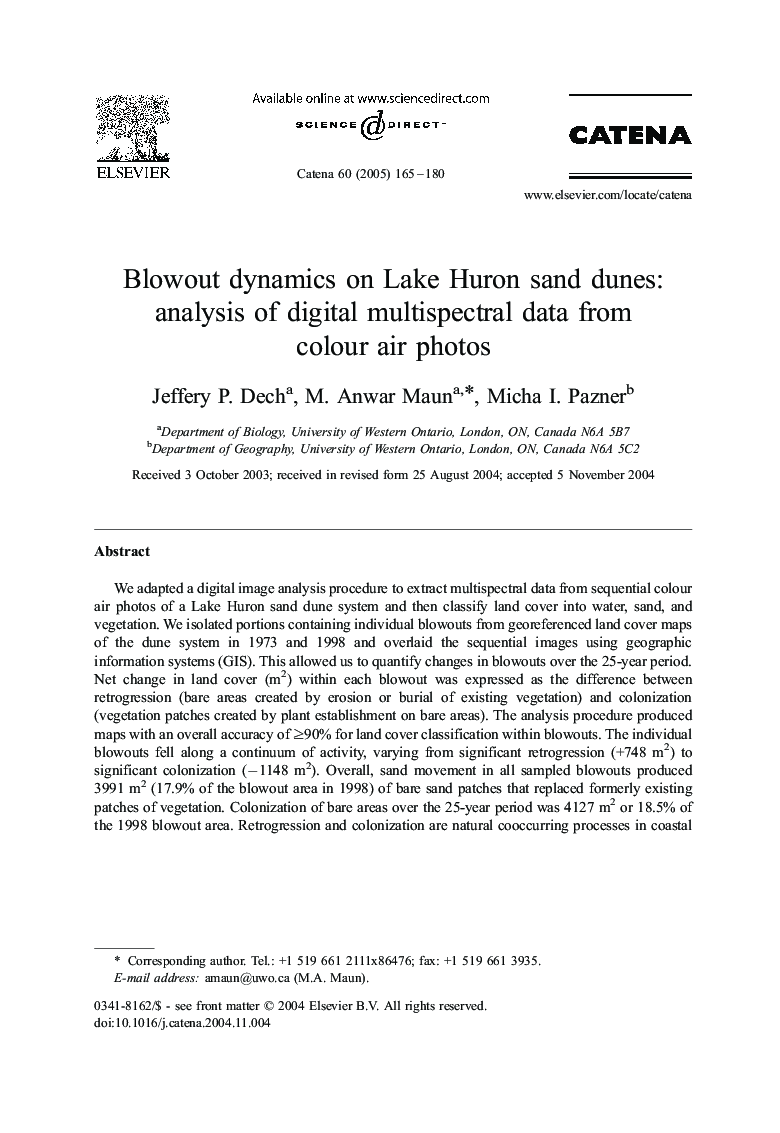| Article ID | Journal | Published Year | Pages | File Type |
|---|---|---|---|---|
| 9489988 | CATENA | 2005 | 16 Pages |
Abstract
We adapted a digital image analysis procedure to extract multispectral data from sequential colour air photos of a Lake Huron sand dune system and then classify land cover into water, sand, and vegetation. We isolated portions containing individual blowouts from georeferenced land cover maps of the dune system in 1973 and 1998 and overlaid the sequential images using geographic information systems (GIS). This allowed us to quantify changes in blowouts over the 25-year period. Net change in land cover (m2) within each blowout was expressed as the difference between retrogression (bare areas created by erosion or burial of existing vegetation) and colonization (vegetation patches created by plant establishment on bare areas). The analysis procedure produced maps with an overall accuracy of â¥90% for land cover classification within blowouts. The individual blowouts fell along a continuum of activity, varying from significant retrogression (+748 m2) to significant colonization (â1148 m2). Overall, sand movement in all sampled blowouts produced 3991 m2 (17.9% of the blowout area in 1998) of bare sand patches that replaced formerly existing patches of vegetation. Colonization of bare areas over the 25-year period was 4127 m2 or 18.5% of the 1998 blowout area. Retrogression and colonization are natural cooccurring processes in coastal dune systems, and the technique described here represents a new tool for the study of temporal and spatial vegetation dynamics in blowouts.
Keywords
Related Topics
Physical Sciences and Engineering
Earth and Planetary Sciences
Earth-Surface Processes
Authors
Jeffery P. Dech, M. Anwar Maun, Micha I. Pazner,
